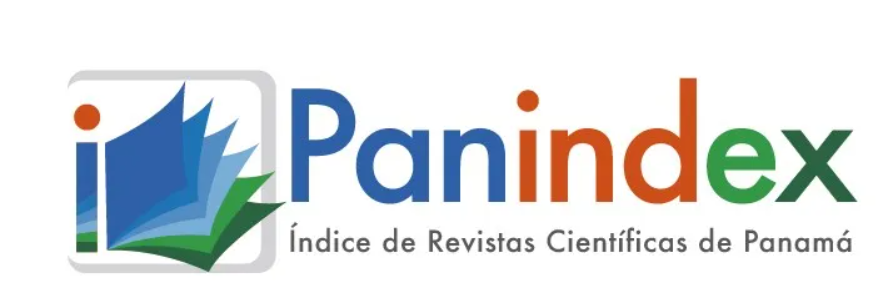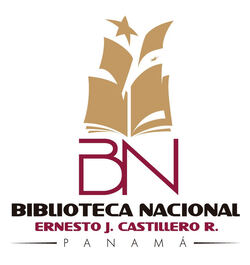The content of the publications and the links suggested in them are the sole responsibility of the authors and not of the Metropolitan University of Education, Science and Technology (UMECIT) or of the journal ORATORES. They are protected by international copyright laws as well as the logos of UMECIT AND ORATORES, hence their reproduction is totally prohibited.
This work is licensed under a Creative Commons Attribution-NonCommercial-NoDerivatives 4.0 International License.
The authors maintain the copyright and transfer the right of the first publication to the journal, with the article registered with Creative Commons Attribution-NonCommercial-NoDerivatives License, which allow others They can download the works published in this magazine and share them with other people, as long as their authorship is recognized, but they cannot be changed in any way nor can they be used commercially.
Authors are recommended to include their work in social networks such as Researchgate and institutional repositories once the article or visible fact has been published on the journal page, without forgetting to include the digital document identifier and the name of the journal.



Abstract
The present article developed from a research, center its purpose in the study of the instrumental technological competences of primary education teachers, in the use of Canaima free software of public institutions. To do this, we went to the theoretical references of González (2003), Berral (2010), Badía (2006), Bermúdez (2010), among others. Methodologically it is a descriptive, field study, non-experimental in which a total of 36 teachers belonging to three educational institutions were taken as a population. An instrument consisting of 6 items, duly validated and with high reliability, was also developed. The results show that professional technological competences are presented at a medium level of development. This indicates that the teachers of these institutions know about computer programs and know about applications of online computer programs, but they must improve since the result reflected according to the scale It is not the most satisfying. While in methodological didactic technological competences they have a high level of development of them.
Keywords
References
Alvarado, A. y Dorrego E. (2003). Tecnología educativa y tecnologías de la comunicación en Venezuela. Revista Comunicar. Nro 21. Disponible en http://redalyc.uaemex.mx/redalyc/pdf/158/15802110.pdf. España: Grupo Comunicar
Álvarez, V (2010) Evaluación de competencias en la Universidad. Material del curso “Evaluación de competencias en el proceso enseñanza-aprendizaje”. Secretariado de formación y apoyo a la calidad. Universidad de Granada, junio-julio.
Bermejo, M.(2009). Competencias Tecnológicas: Conocimientos, habilidades, destrezas y actitudes. México Mc Graw Hill.
Bosqued (2005). ¡Que no te pese el trabajo! Ediciones Gestión. 2.000. España.
Cabello, R y col (2006). TIC Y EDUCACIÖN: Competencias tecnológicas y capacitación para la apropiación de las tecnologías.
Cabello,R (2006). Aproximación al estudio de competencias tecnológicas. Planes de capacitación docente. Instituto de desarrollo humano de la Universidad Nacional de General Sarmiento.
EURYDICE (2001). Basic indicators on the incorporation of ICT into European Education Systems: Facts and figures. Informe Anual. En European Commission Directorate General for Education and Culture. Bruselas. consultado el 3 de abril de 2011, de http://www.pedz.unimannheim.de/daten/edz-wf/eud/01/2-87116-332-4-EN.pdf.
Fernández, J (2005) competencias profesionales del docente en la sociedad del siglo XXI. Universidad de Castilla. La Mancha. España.
GALLEGO, M.J.; GAMIZ, V.; GUTIERREZ, E. (2010) El futuro docente ante las competencias en el uso de las tecnologías de la información y comunicación para ensenar [artículo en línea]. EDUTEC, Revista Electrónica de Tecnología Educativa.Num.34/ Diciembre 2010.
García, A y col. (2008). Investigación y Tecnologías de la Información y Comunicación al Servicio de la Innovación Educativa. Universidad de Salamanca-España.
González, A (2007). Formación permanente para el desarrollo de competencias tecnológicas.
Guzmán, T (2010). TIC Y EDUCACION. Competencias tecnológicas para la profesión académica: usos y propuestas en académicos de la universidad Autónoma de Tamaulipas.
Hernández, G. (2000). Paradigmas en psicología de la educación. México: Paidós Educador.
Hernandez, S, Fernández, C, y Batista P. (2006) METODOLOGÍA DE LA INVESTIGACIÓN. Mc. GRAW-HILL. Cuarta Edición, México.
INSTITUTO NACIONAL DE TECNOLOGÍAS DE LA EDUCACIÓN DE EEUU (2008). The ISTE NETS and Performance Indicators for Teachers. Consultado el 03 de abril de 2011, de http://www.iste.org/Libraries/PDFs/NETS_for_Teachers_2008_EN.sflb.ashx
Malhotra,N (2004). Investigaciones de Mercados. Cuarta Edición. Pearson Educación. México.
MINISTERIO DE EDUCACIÓN DE CHILE (2006). Estándares en Tecnologías de la Información y la Comunicación para la Formación Inicial Docente. Recuperado el 03 de abril de 2011, de http://portal.enlaces.cl/portales/tp3197633a5s46/documentos/200707191420080.Estandares.pdf
Melo, M (2009). Competencias tecnológicas del docente en la praxis educativa.
Méndez (2006). Metodología, Diseño y Desarrollo, 1 era Edición. Mc. Graw. Hill . Colombia.
Orientaciones educativas para el uso del computador portátil Canaima. (2009)
Pere, M (2008). Funciones, roles y competencia necesarias, formación.
Pérez otros (2009).Innovación en Docencia Universitaria con Moodle, casos prácticos. España. Editorial Club Universitario.
Piedraita (2003). Un modelo para integrar las TIC en currículo. Eduteka. Edición 16.
Pressman,R (2004). Ingeniería del sotfware: Un enfoque práctico: México: Editorial Mc. Graw Hill.
Quintana, J (2000) competencia en tecnología de la información del profesorado de educación infantil y primaria. Revista inter universitaria de tecnología educativa. 0 (agosto-julio).
Rodríguez y col (2007) Como planificar asignaturas para el aprendizaje de competencias. Documentos ice, Universidad de Oviedo.
Sanabria, L (2004),Formación de competencias docentes,1 ed. Bogotá imprenta Nacional V 1 página 140.
Sarramona, J (2008), Teoría de la Educación: reflexión y normativa pedagógica. ISBN: 978-84-344-2670-2.1 edición (02/2000). Serie Ariel Educación. Volumen: 1. Lugar de publicación: España.
UNESCO, (2004).Las tecnologías de la información y comunicación para el docente. Guía de planificación.
UNESCO (2008). Estándares de competencias en TIC para docentes. consultado el 3 de abril de 2011, de http://www.eduteka.org/modulos/11/342/868/1
UNESCO (2008). Normas UNESCO sobre Competencias en tic para docentes (NUCTICD). Disponible en :www.innovavirtual.org/moodleperu/file.php/1/ICT-CST- Policy_Framework_-_SP.pdf Paris: Autor. Uribe V (2010). Estrategias interactivas par el desarrollo de competencias tecnológicas.
Weigel, T., Mulder, M. & Collins, K. (2007) The concept of competence in the development of vocational education and training in selected EU member states, Journal of Vocational Education and Training, 59, 1, 51-64.
Downloads
Publication Facts
Reviewer profiles N/A
Author statements
- Academic society
- Universidad Metropolitana de Educación, Ciencia y Tecnología
- Publisher
- Universidad Metropolitana de Educación, Ciencia y Tecnología



















